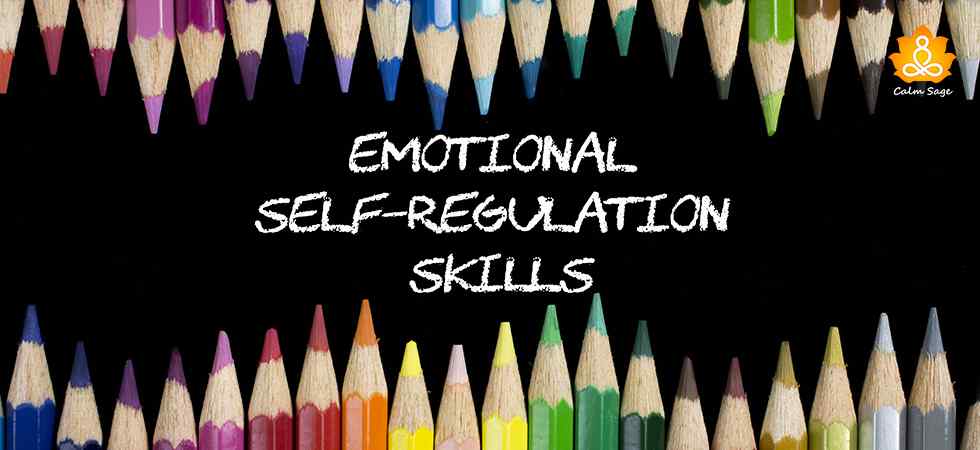17 Must Try Emotional Regulation Strategies

It’s not always easy to control and balance our emotions or even maintain that balance. To help us maintain that balance, there are emotional regulation strategies. These emotional regulation interventions are very important for all of us to lead a balanced life as they keep our emotions and feelings balanced.
When we can be so heavily controlled by our emotions that we don’t think right, these skills can come in handy!
When your emotions begin to overwhelm you, know that it’s time to bring in your emotional regulation techniques. Not everyone is able enough to manage their emotions well because of a mere lack of emotional regulation skills.
When our emotions are not regulated properly, they can cause multiple problems such as negative thoughts and emotions, problematic beliefs, etc. In this blog are listed 15+ emotional regulation strategies that you can try if you’re struggling to keep your emotions balanced or even if you want to learn a couple of new ways to regulate emotions to live a happy life!
17 Emotional Regulation Strategies And Exercises to Try!
To help you find good emotional regulation techniques, we have got you some of the most effective emotional regulation strategies.
Let’s look at some emotional regulation techniques that can work for you;
1. Identify your triggers
Being negatively charged in stressful situations is quite common. While it’s not right to run from your negative feelings, you also cannot let them overpower you. One of the best emotional regulation techniques is to identify what’s triggering your emotional dysregulation.
Once that’s done, try to understand the source of them. Try to understand why you are feeling what you are feeling. What is influencing your thoughts? and so on.
2. Watch External Factors
Sometimes it’s not the mind but the body that causes emotional outbursts. Before your emotions take over and you start yelling or crying, try to divert your mind’s attention to your body. What external factors seem to be affecting your emotions?
Is the temperature of the room? Are you hungry, tired, or bored? If any external factors are causing your emotional dysregulation, try comforting your body first.
3. Watch Your Self-Talk
The benefits of positive self-talk are many and emotional regulations are just one of them. When you feel overwhelmed with negative thoughts or feel closer to an emotional outburst, try giving yourself a pep talk. Remind yourself of all your achievements and all the good things that have happened to you.
Try to motivate and encourage yourself to not give up so easily. Tell yourself that you are a strong, independent person who can do anything that you wish to. Your self-talk can be a great emotional regulation strategy if you use it wisely.
4. Distract Your Emotions
Sometimes ‘letting go’ is the best option to regulate your emotions. Emotional regulation is not about fighting your negative thoughts head first, but knowing when to choose your battles. And this distraction technique can work wonderfully to help you control your emotions once again.
You should know what can distract you from overwhelming emotions. Is it a walk in the park, some soothing music, watching a movie, or something else? Whatever it may be, you should know what can distract you, and use these distractions to not let your negative emotions trouble you.
5. Accept Your Feelings
When we talk about emotional self-regulation techniques, this is a very important one. We often unknowingly judge our feelings and that judgment produces a new set of negative emotions which overpower our feelings and thoughts and leave us in misery.
For example, you may be angry at your partner because they canceled dinner plans with you, so you yell and say terrible things to them.
Later, after you’ve cooled down, you judge your own feelings and wonder how easily you got angry for such a simple thing. This can make you stuck in a loop very easily. So, instead of judging your emotions, acknowledge them, accept them, and move on.
6. Read Between The Lines
Our emotions sometimes act like a message from our minds. Your mind is trying to tell you something. In this emotional regulation technique, you need to ask yourself a question, “What are my emotions trying to tell me?”
You can find answers in your behaviors and what you consider are your triggers. Your mind can be telling you various things like maybe you need rest, maybe there is unresolved trauma, maybe you haven’t processed your emotions properly, etc.
7. Express Your Emotions
I know it’s easier said than done! But trust me, this emotional regulation technique will change your life. When you learn to express your emotions regularly, you learn how to balance your emotions and feelings. There are simple ways you can express your feelings and emotions.
For example, you can talk to a friend, parent, or partner. Start journaling or find another comfortable way to let your emotions out of your body. Make sure you don’t suppress your emotions as bottling your emotions will only make things worse.
8. Take a Break
We are all humans and we cannot always be in a war with our negative thoughts and emotions. The emotional regulation strategy I’m talking about is taking a break. When you learn to take a break, you give your mind (and emotions!) a rest. If you find yourself stuck in your emotions and you feel like you’ve lost control, stop fighting and take a break.
It’s completely okay to take some time off and just switch your brain off. Don’t take too long a break, tiny breaks can work well. Once you feel rejuvenated it’s time to get back in the game.
9. Allow Mindfulness
Mindfulness is another emotional regulation exercise that you can practice to control your emotions. The exercise is about living in the present moment instead of being stuck at a point in the past or worrying unnecessarily about the future. When you practice mindfulness, you become more attuned to the thoughts and feelings and how you react to them.
You can work on observing your thoughts and emotions, describing them as they are in the moment, and being non-judgmental about whatever emotion or thought pops up in your mind.
10. Practice Radical Acceptance
To practice radical acceptance, you need to identify the situation. What is the emotion you’re struggling with? Name it. Once you do it, you need to describe the situation where you’re unable to find acceptance. Radical acceptance is about figuring out the source of your pain or imbalance in our case.
To exercise radical acceptance, you need to look within. To do that, sit in a quiet place, inhale deeply, and become aware of your thoughts and emotions that you struggle with in your reality and then let them go.
11. Exercise Opposite Action
Opposite action is another emotional regulation strategy that you can try. Emotions often come with anger and sadness. More often than not, we assume that our emotion drives our behaviors, but it is the other way around. It’s possible to bring forth emotion through behavior. That’s what the opposite action is about.
Instead of doing what you would normally do when you feel an emotion, try doing the opposite of it. For example, if you’re angry, talk quietly instead of shouting in anger. If you’re feeling sad, then reach out to a friend instead of isolating yourself.
12. Try P.L.E.A.S.E.
Another interesting way to regulate your emotions is to try P.L.E.A.S.E. This technique is when you acknowledge the connection between your mind and body. When you do this, you’ll find balancing your emotions easier.
Let’s take a look at what P.L.E.A.S.E. means;
- PL – Treat physical health
- E – Eat healthily
- A – Avoid recreational drugs
- S – Sleep well
- E – Exercise
These should be taken as a guide to keeping your mind and body healthy. Once you acknowledge that, you’ll see how well your emotions will be balanced.
13. Focus on Positive Activities
You might not know but we’re good at filtering the positives in our lives and focusing only on the negative. In hindsight, it might feel good but it’s certainly not healthy for you. This brings us to another emotional regulation technique that requires you to focus on the positive activities in your life.
These good parts and positive activities can include;
- Having a well-balanced meal
- Watching a movie
- Visiting loved ones
- Going for a walk
- Having a relaxing day
- Trying a new hobby, etc.
14. Practice “Just Like Me” Technique
This is another simple emotional regulation technique called “Just Like Me” technique, that allows you to value yourself in a positive light. This also allows you to create a connection with the person you’re experiencing something negative towards. All you have to do is follow a simple exercise.
For example; If there’s someone who is doing better than you and you feel jealous, then you can try to add “just like me” in the thought. Say, “The other person is doing well in the business, just like me.” This will help you lower the negative emotion and balance the rest of the emotions.
15. Pause And Allow Curiosity
This is another regulation technique you can use to balance out your emotions. Pause and allow yourself to question either yourself or the other person. It’ll give you enough space to think about how to respond rather than react. You can also pause to feel your emotions and make better choices. Getting curious will allow you to avoid all emotions that appear negative to you.
Once you do that, you’ll realize that this emotion is leading you to so much more. For example, let’s take the above-mentioned example. Once you know that you’re jealous of the other person, you can take a pause and see what it is about them that makes you jealous and change from there.
16. Try The 5-4-3-2-1 Technique
While it’s a grounding technique, it can work well in regulating your emotions as well. The 5-4-3-2-1 technique can help you calm your mind and increase mindfulness aka the art of staying in the present moment.
All you have to do is this;
- List 5 things you can see: Take in the details as much as you can. Colors, patterns, textures, etc. can help you focus.
- List 4 things you can feel: Again, be careful with the details. Focus on what brings you comfort and helps you ground yourself. This will allow you to feel in touch with your emotions as well.
- List 3 things you can hear: Anything you can hear; the ticking of the clock, footsteps, birds tweeting, etc.
- List 2 things you can smell: This can help you focus too. When you’re looking for something soothing enough to regulate emotions, then focus on what you can smell. The scent of flowers, your favorite dish, etc.
- List 1 thing you can taste: To control a rush of emotions, you can try to eat something you like. It’s one of the quickest ways to distract yourself from the negative emotions you’re experiencing.
17. Seek Professional Support
When nothing seems to work, the best thing to do is seek out professional help and support. A professional can help you figure out what is causing you to feel emotional dysregulation and what’s the best way for you to regulate your emotions and balance them for better health.
If you’re unsure where to begin, you can click the link given below to connect with a professional mental health counselor today. A therapist can help you as well as give you tools to work on regulating your emotions in the future too.
That’s All Folks!
I hope you found this blog interesting and helpful. These are some of the most effective emotional regulation strategies and techniques that can help you bring balance back into your life.
If you wish to learn more about emotional regulation strategies and exercises, do let us know in the comment section below.
Thanks for reading.
Take care and stay safe.
Next Read:
Why You Keep Absorbing Other People’s Emotions (And How to Stop)
7 Key Signs That You’re on The Path to Emotional Healing
10 Hidden Sources of Emotional Baggage You Should Know About




















